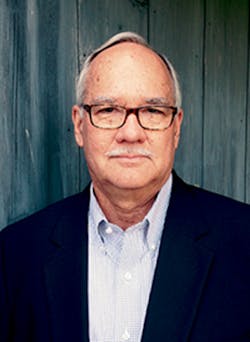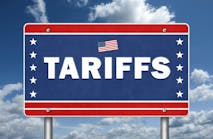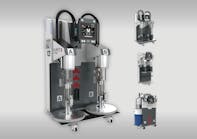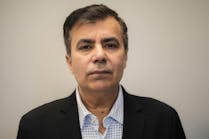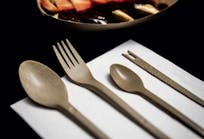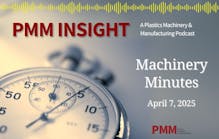I have never cared much for lists of highlights of the year that newspapers and magazines publish every December. But if I were compiling a list of notable plastics industry trends chronicled in 2018 headlines, the top of my list would be the significant investment in bricks and mortar in the U.S. by companies based elsewhere.
The strong domestic growth of the plastics industry has convinced many foreign companies that the U.S. is a good place to assemble or build machinery. Processors benefit from equipment that is more price-competitive when it is made in the USA. Along with building machinery here, manufacturers beef up their service operations, another plus for processors.
I was thinking about new investment in the U.S. during a recent visit to Nissei Plastic Machinery America Inc. in San Antonio. It is almost startling when you first see the massive 115,000-square-foot, $21 million plant, which opened in March, from about a half mile away. It is optimistically sized for a great deal of growth.
Katashi Aoki launched Nissei in Japan in 1947 and his grandson, Hozumi Yoda, is the current president. "Our founder's dream was to sell machines in the U.S.," said Mac Otsuka, marketing manager at Nissei America Inc., the company's California-based sales arm. "He always thought America was the most important market. So, it is his dream. We achieved it. We made a huge plant here in the U.S."
Nissei added plants in China in 2009 and Thailand in 2012. Planning for the Texas plant started in late 2015.
Nissei sees a need for mid-sized to large injection presses in the North American market and is building hybrid machines here. Plans are to supply Mexico, South and Central America and eventually Europe from the Texas plant. Injection presses sold in Europe are currently shipped from Japan.
Nissei plans to build machines with 600 tons to 1,400 tons of clamping force, but the plant has space and crane capacity to accommodate presses up to 3,000 tons. Driving the U.S. investment is demand from manufacturers of automotive, appliance and construction parts, as well as pallets and large shipping containers.
The machine series being assembled in Texas are the FNX-III, FVX-III and a new large prototype press still in development. These machines use Nissei's hybrid X-Pump system, in which the servo-motors rotate at high speed only when required. This significantly reduces energy consumption and enhances stability, repeatability and control in low pressure ranges.
The prototype will be a new series, but details have not yet been made public. It will be like Nissei's other hybrid machines in that it will use Nissei Smart Application for Plastic Injection (N-SAPLI) software, which optimizes the clamping force to achieve better part quality, energy efficiency and downsizing.
Nissei currently sells about 400 presses a year in North America, or about 25 percent of its total worldwide. The Texas plant's output is starting at a modest 30 presses per year and will increase.
Otsuka said Nissei currently has about 10 percent of the overall market share in the U.S., but its share drops to 5 percent for large-tonnage machines. "We believe we can boost our share by supplying large tonnage machines — that is 660 tons and up — in quick lead times," he said.
Presses up to 950 tons will be stocked in Texas for delivery in two to three weeks.
Currently, clamping units from China and injection units from Japan are being assembled in the new plant. During my visit, Nissei Plastic Machinery President Kiyoto Takizawa was on the production floor working on an injection unit and VP Junichi Kubota was working on a clamping unit that was about to be joined.
The plan is to eventually source some components, such as screws and barrels, locally. Components to customize the presses are stocked in San Antonio.
Otsuka said presses will continue to be designed in Japan and the quality will be the same no matter where they are built.
The new plant sits on 9 acres, giving it plenty of room to expand. It includes a tech center with demonstration machines, a parts warehouse and training space. The technical center had five presses with clamping forces from 55 tons to 950 tons during my visit.
Nissei is not the only company to ramp up production of mid-sized to large presses. Ube Machinery Inc. expanded its Ann Arbor, Mich., assembly operation this year, doubling its capacity for manufacturing molding machines.
Auxiliary equipment manufacturers also have made impressive brick-and-mortar investments this year. Piovan subsidiary Una-Dyn moved into a new headquarters and manufacturing plant in Fredericksburg, Va. Italy's Moretto continued to increase its North American presence with a new facility in Jackson Center, Pa. French robot manufacturer Sepro launched assembly operations in Warrendale, Pa.
The trend that started with reshoring is continuing with direct investment to manufacture equipment for the North American market. These quality companies will push each other to be better. Processors should like that.
Ron Shinn, editor
Ron Shinn | Editor
Editor Ron Shinn is a co-founder of Plastics Machinery & Manufacturing and has been covering the plastics industry for more than 35 years. He leads the editorial team, directs coverage and sets the editorial calendar. He also writes features, including the Talking Points column and On the Factory Floor, and covers recycling and sustainability for PMM and Plastics Recycling.


